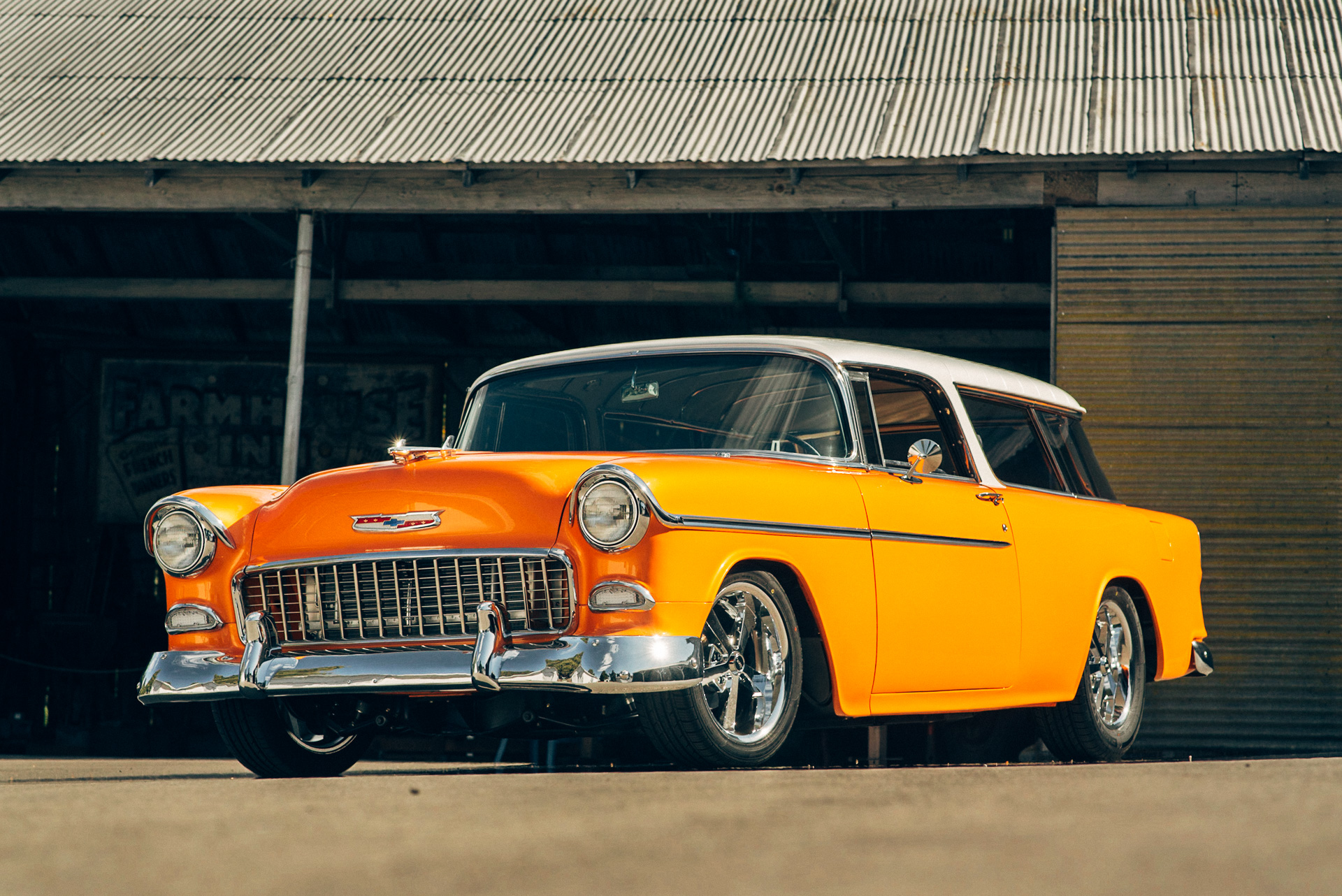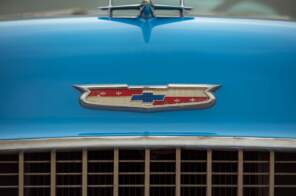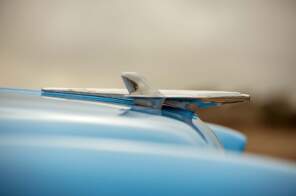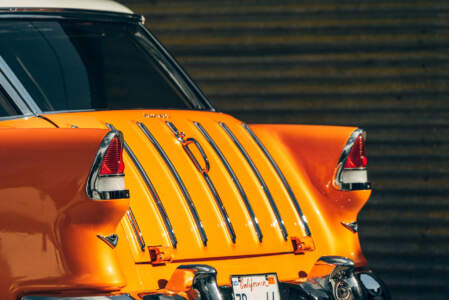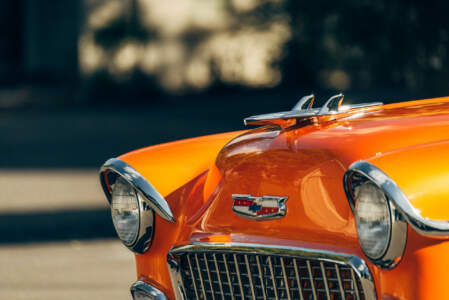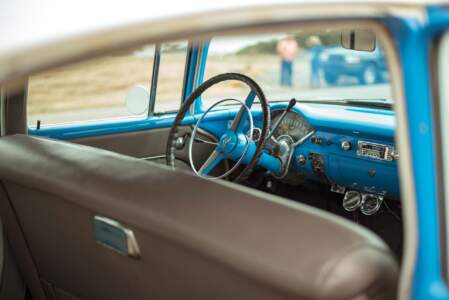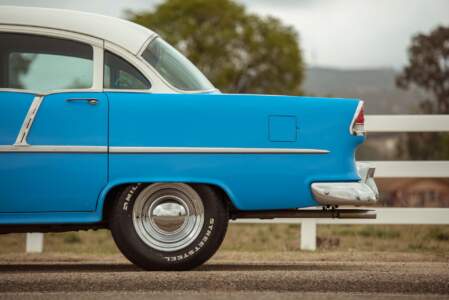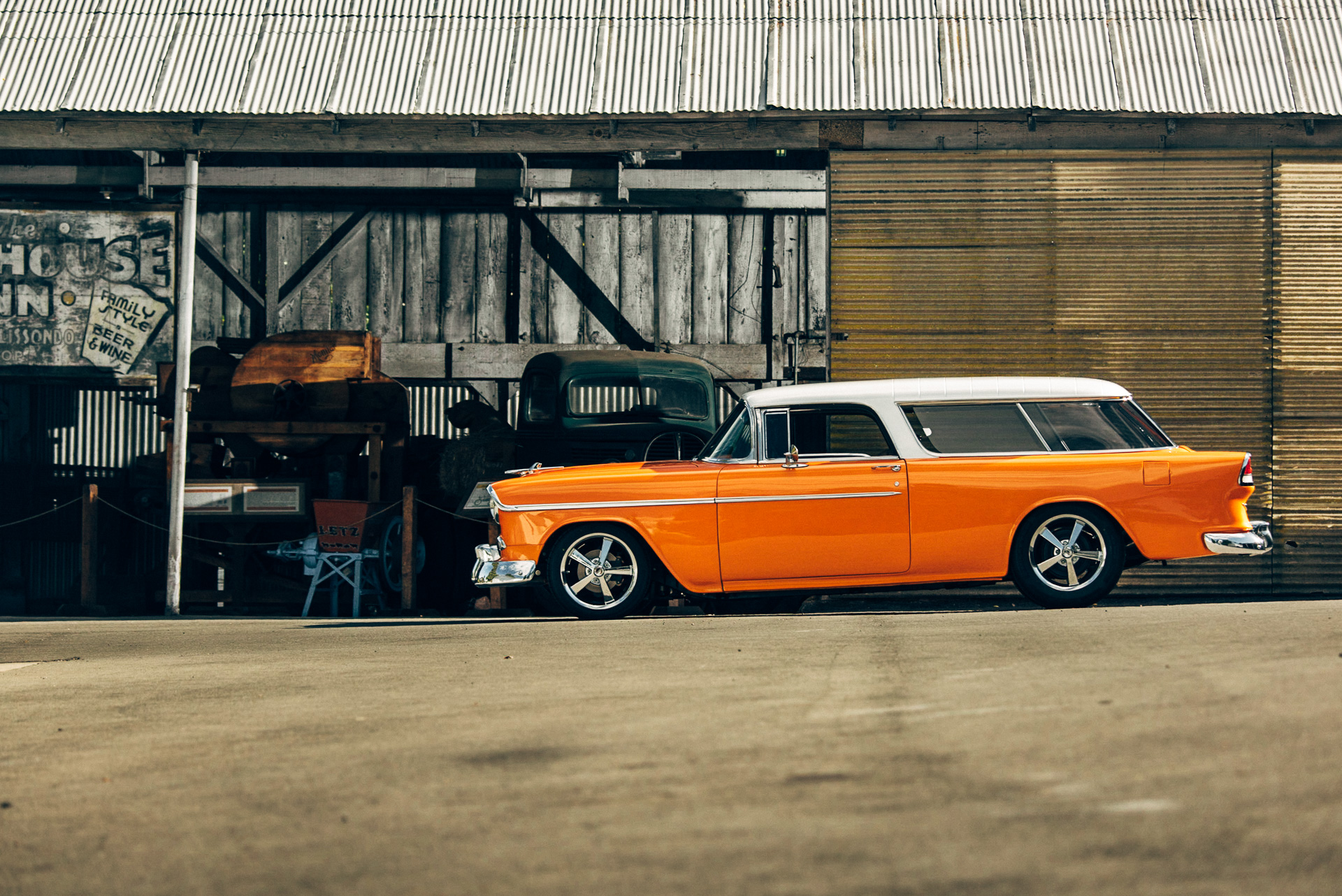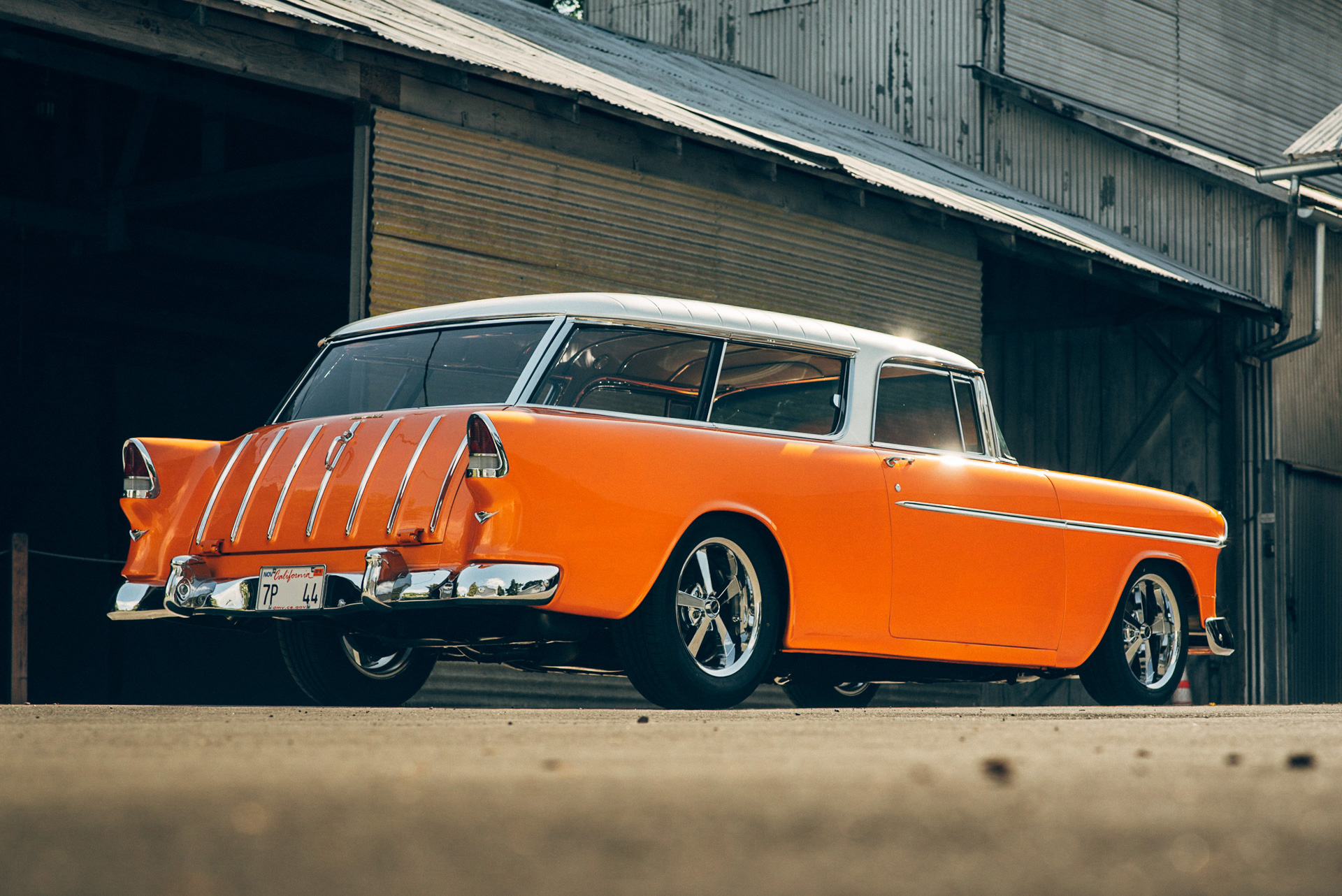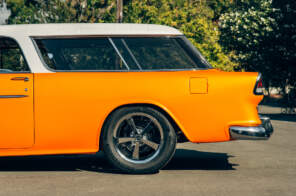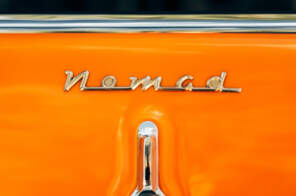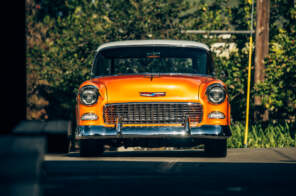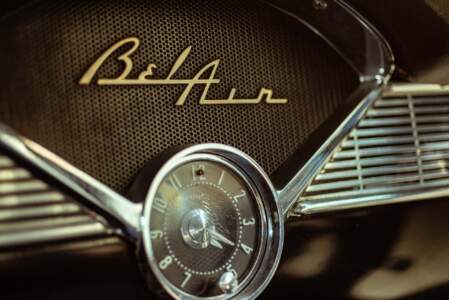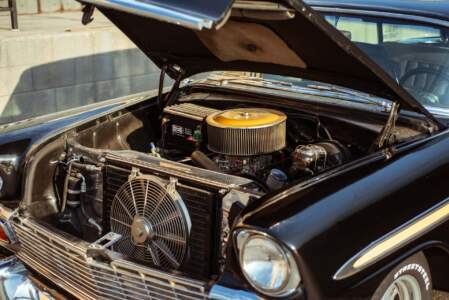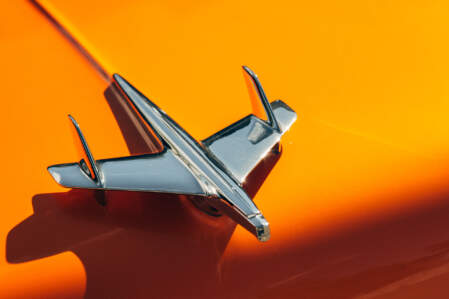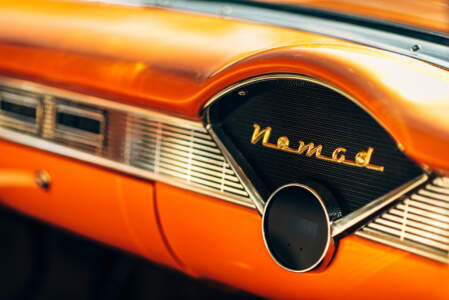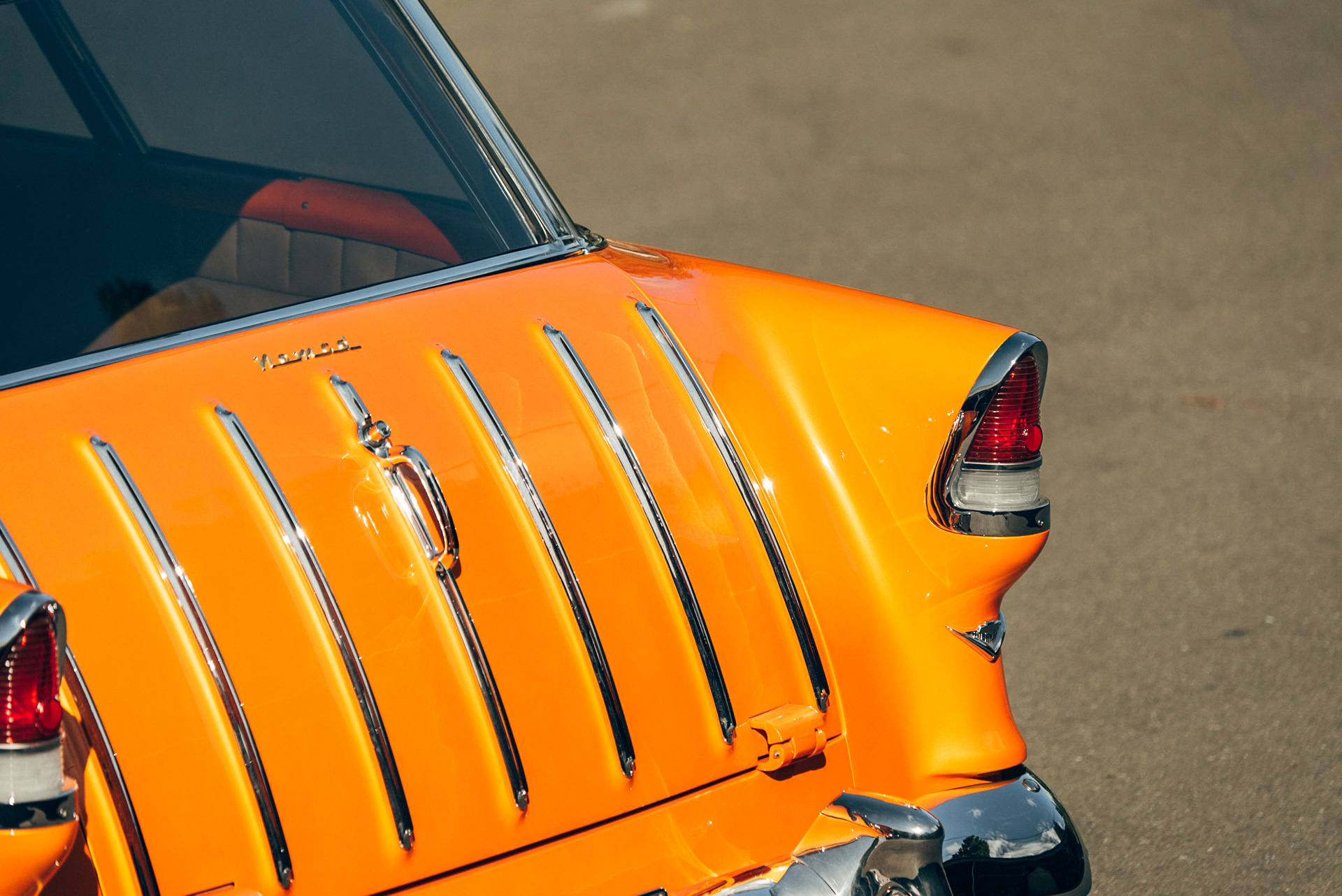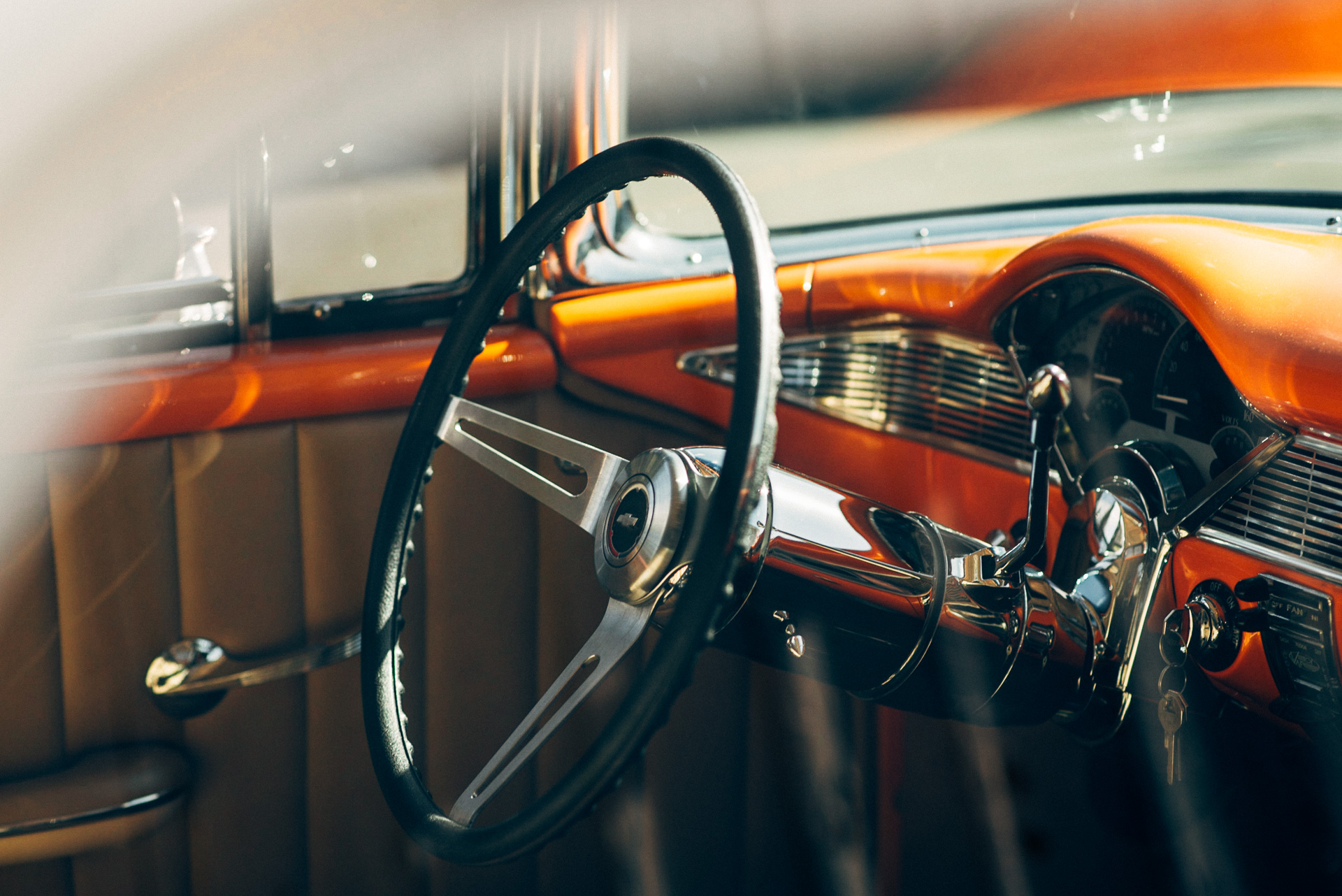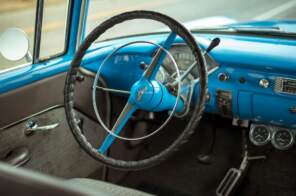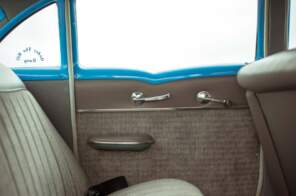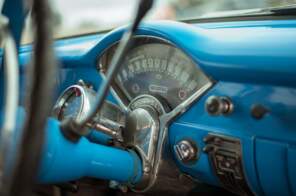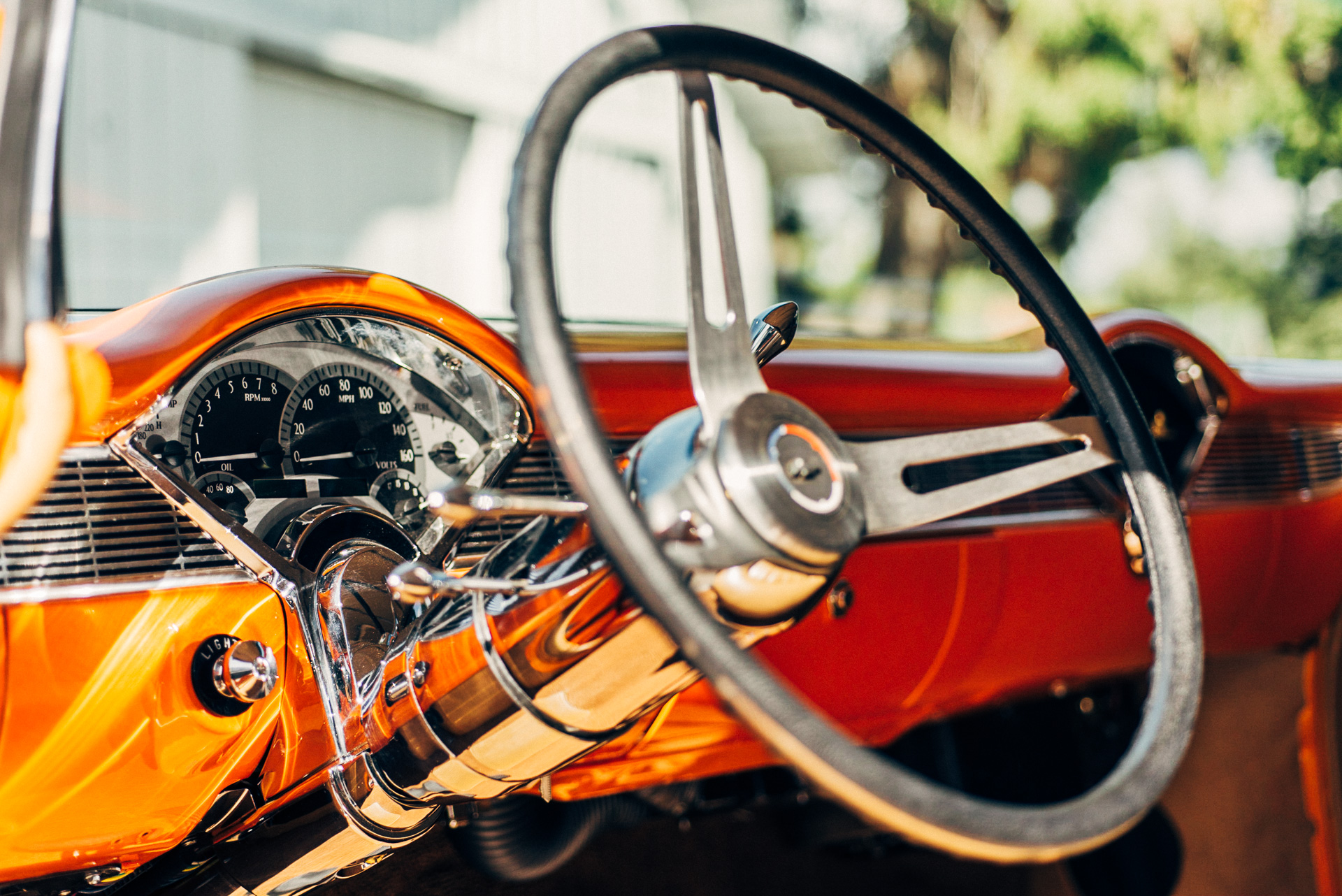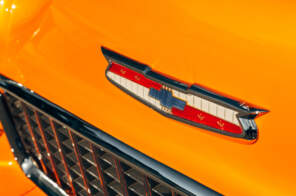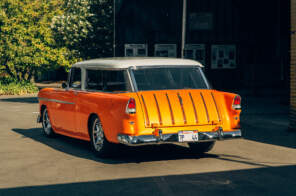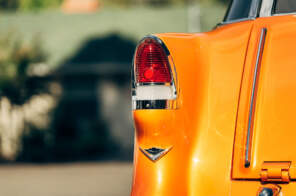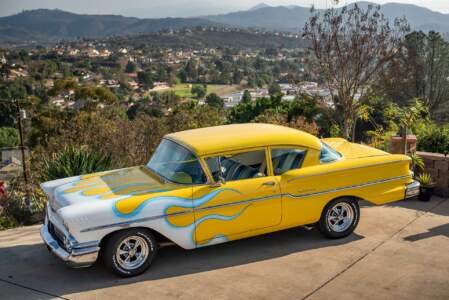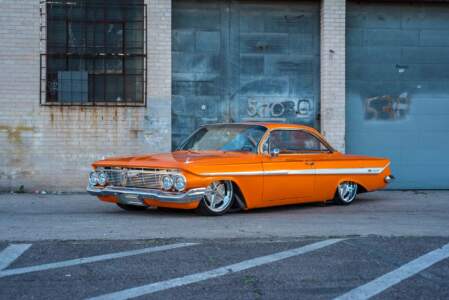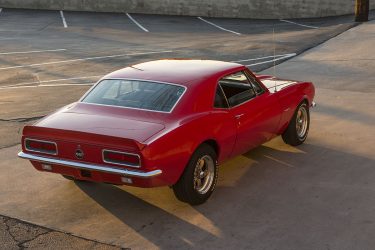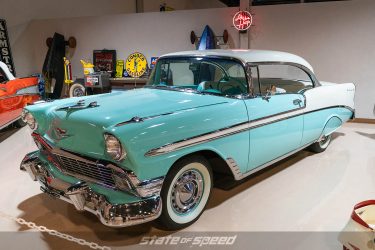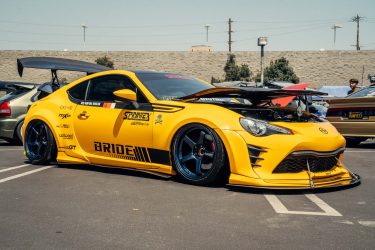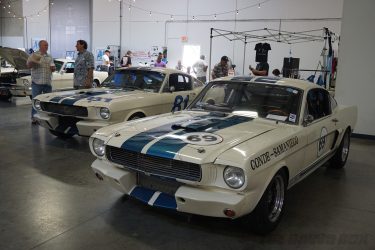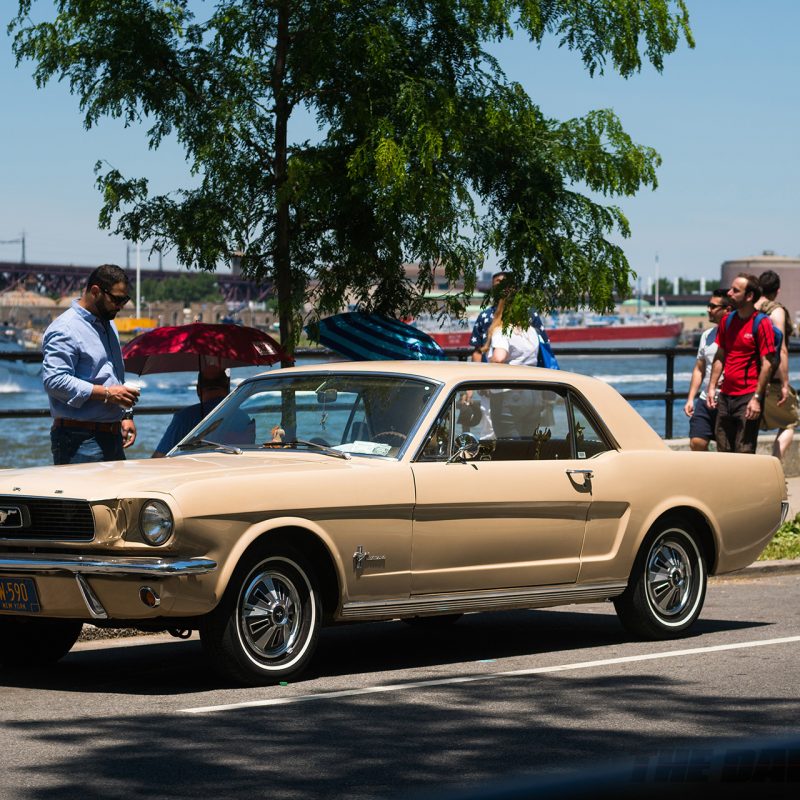Classic Tri-Five
1955 to 1957 Chevrolet Car History
It’s not actually a single car, but when you say “Tri-Five,” people know you’re talking about that classic “shoebox” style Chevrolet automobiles from 1955 to 1957. Their revolutionary designs spawned a legendary history and full-on industries that cater solely to them. What made these cars special?
It’s not hard to see the Tri-Five as part of Americana, the idealized vision of the 50s and 60s in the United States and its car culture. The name comes from the three years these cars came about 1955, 1956 and 1957. Each year, the cars changed radically to match the looks of Cadillacs of the time. It was a huge effort, costing Chevrolet millions of dollars in 1950s money to make it happen. But, make it happen they did and spurned off one of the most recognized and desired set of automobiles the world has ever seen.
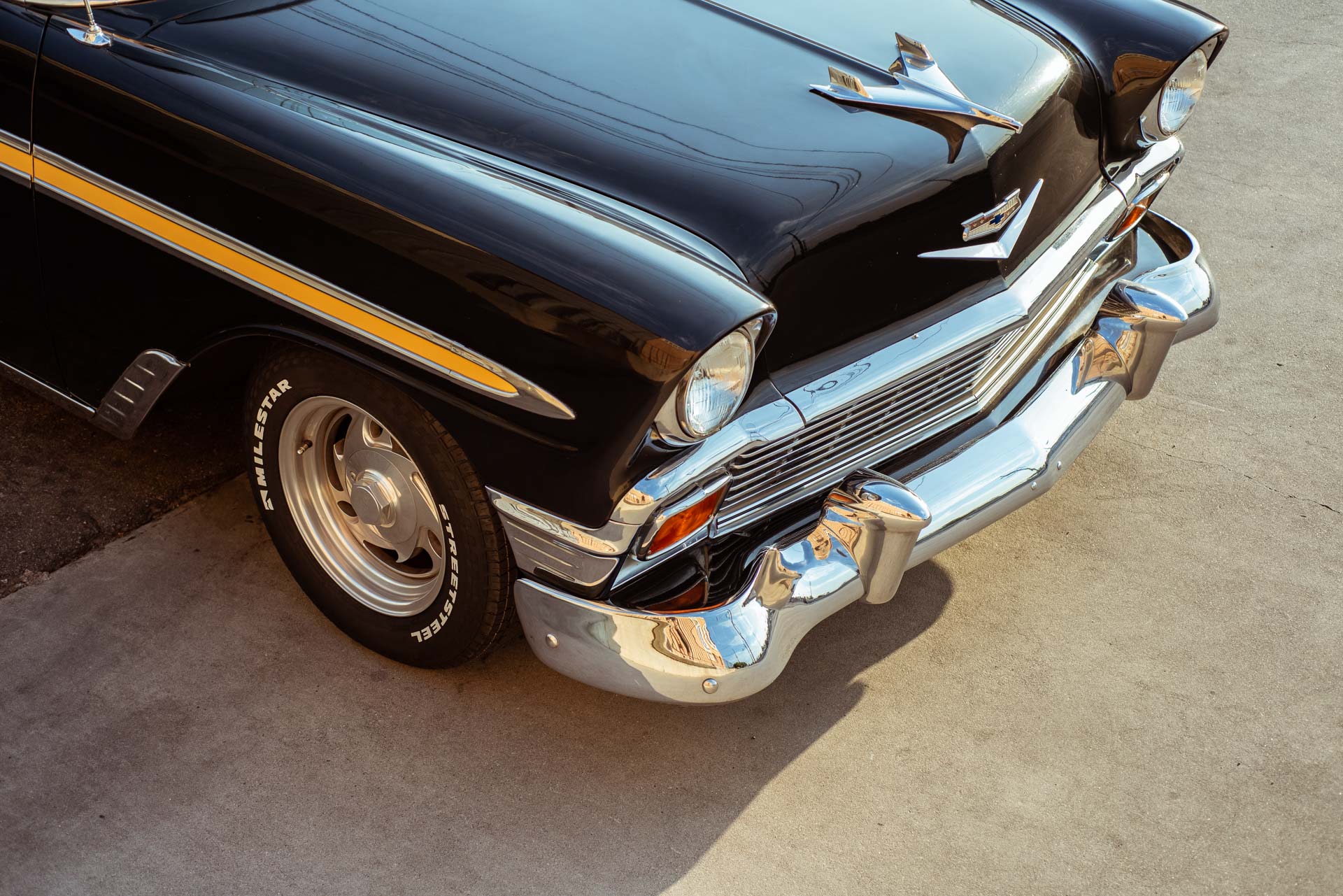
Prior to 1955
While we recognize the Tri-Five as a specific idea in our heads, the reality is that prior to 1955 Chevrolet had the One-Fifty, Two-Ten, and Bel Air models built and in production. All three started earlier with 1950 for the Bel Air and 1953 for the One-Fifty and Two-Ten. It was the Bel Air that set the tone for all three models and any Chevrolet until 1975.
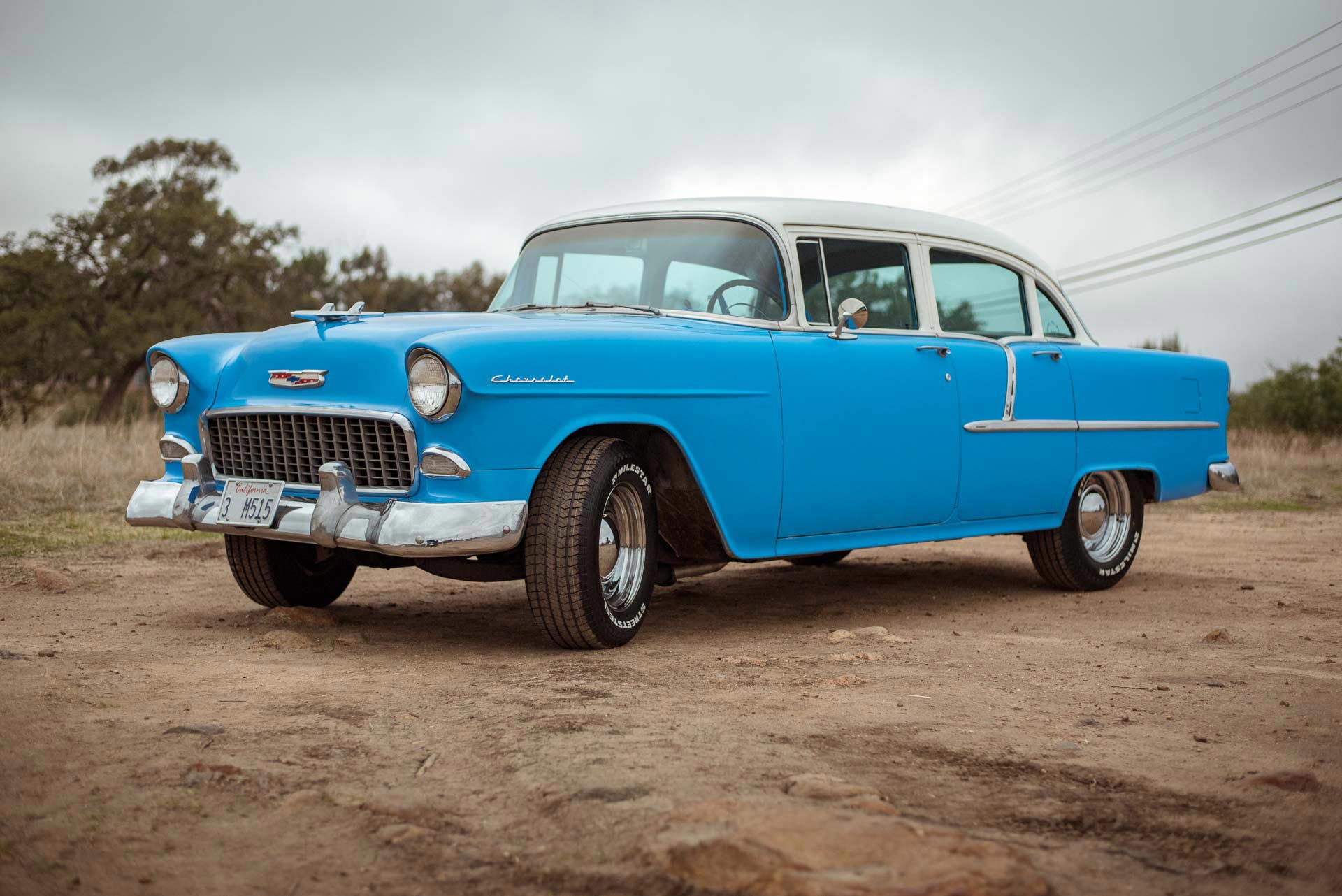
It started as a two-door convertible with a hardtop, but that hardtop couldn’t be removed. It was a very sleek looking roof design and the Bel Air wouldn’t get a real convertible until 1953. That same year, it became a high-end model with the One-Fifty and Two-Ten being the lower trims.
…parts that made that 1940s era of cars unique to themselves was now gone…
It was also where Chevrolet evolved from pre-WWII automotive design. Torque tube drives, splash-feed six-cylinder engines, knee-action suspension, split windshields and parts that made that 1940s era of cars unique to themselves was now gone and replaced with modern designs. There was also the addition of more chrome to bigger exterior trim parts, too.
1955, The 265 V8, and The Nomad
Then came 1955 and a quick series of evolutions began for the full-size Chevrolet cars. The biggest thing that brought this about was the introduction of the 265-cubic-inch Small Block Chevrolet V8 known as the “Turbo-Fire” and the original SBC. That displacement was made by the 3.750-inch bore and 3.00-inch stroke.
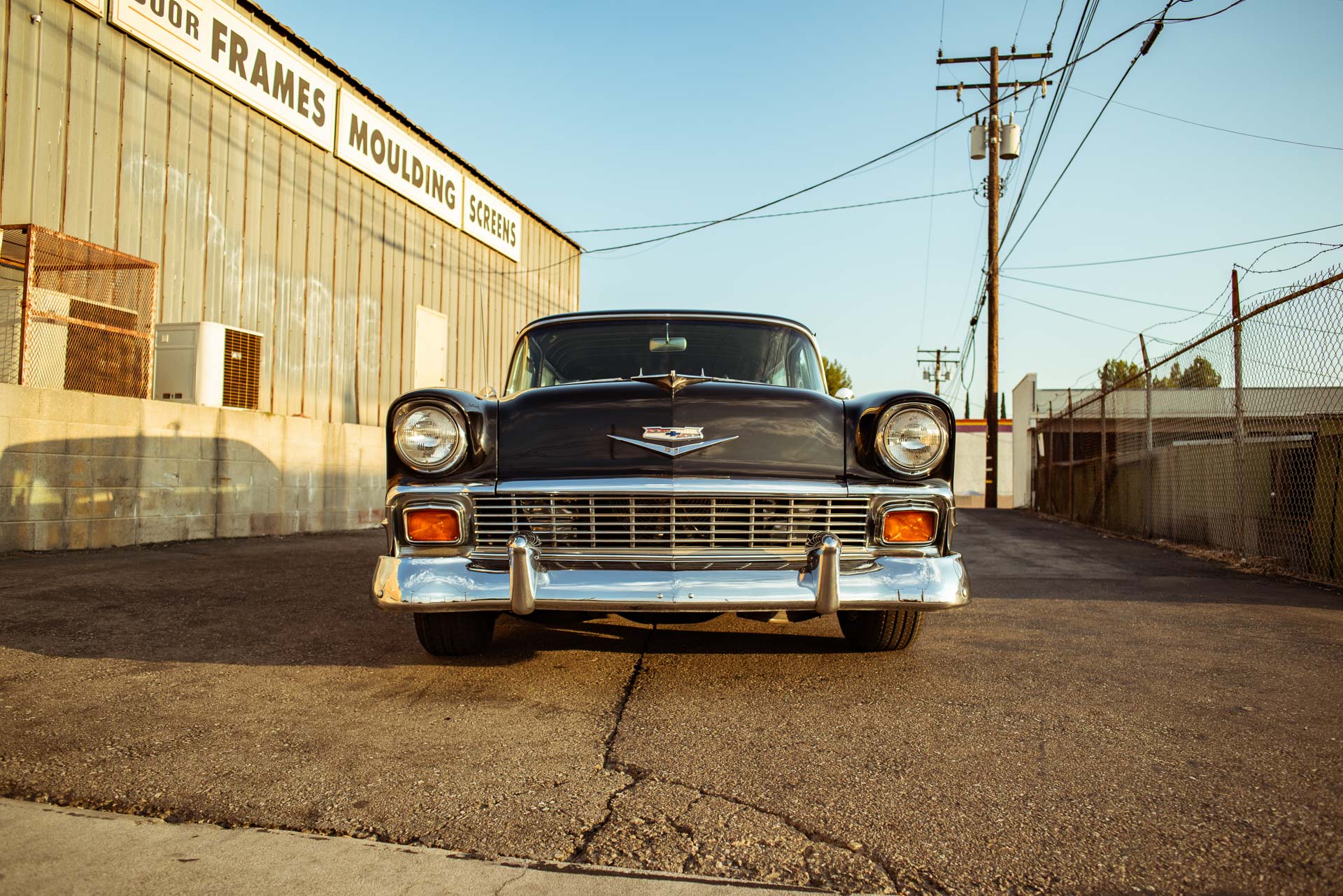
It was the combination of high-compression with that short stroke that produced 162-horsepower with a two-barrel carburetor. However, it was the “Power Pack” and “Super Power Pack” options that lit the fire with 180-horsepower in the Power Pack and 195-horsepower with the Super Power Pack. What made these different were the use of four-barrel Rochester carburetors and dual exhausts.
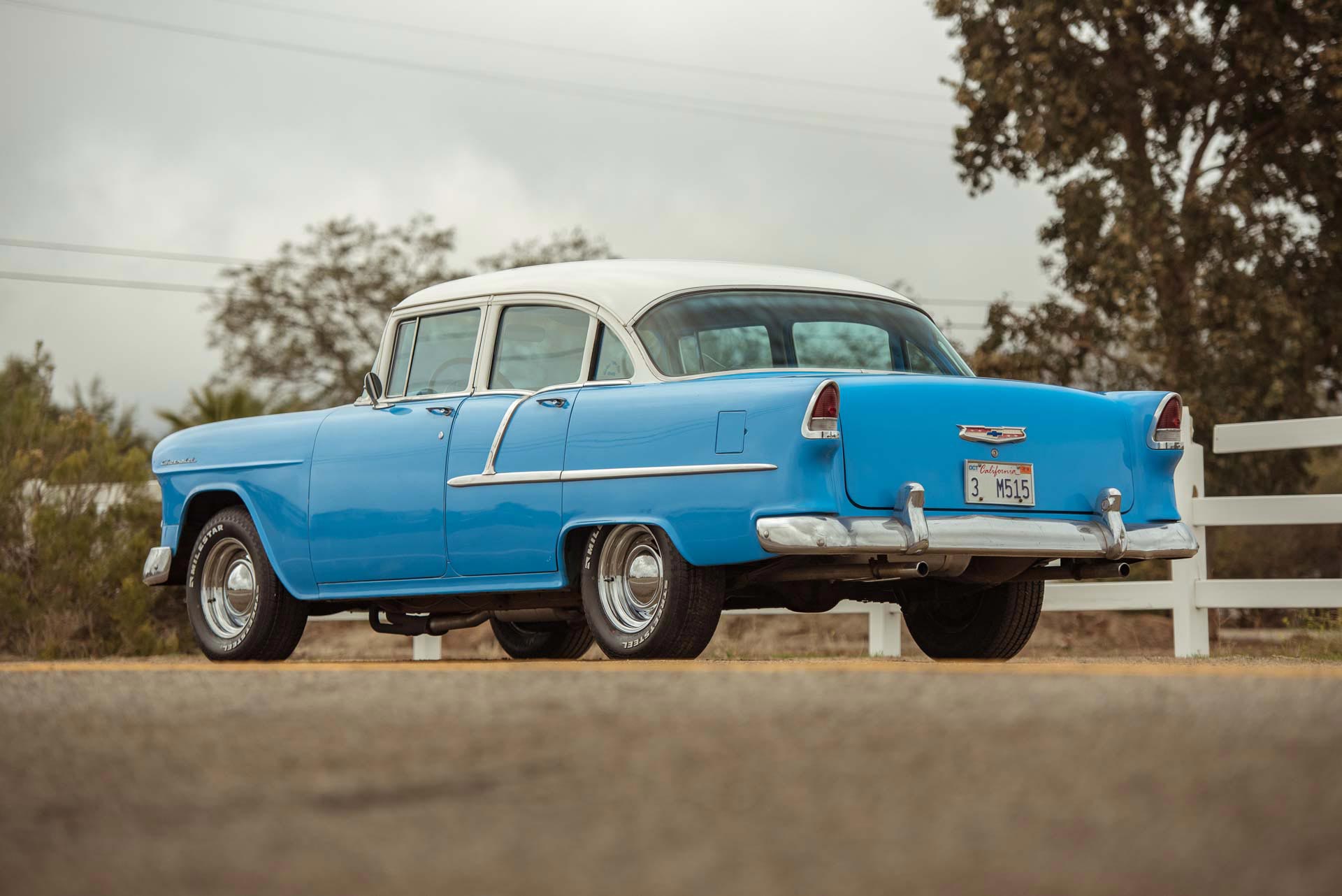
While impressive, there was an issue with the 265 in 1955: there was no oil filtration built into the block. It was an add-on option mounted to the thermostat housing. For that reason, the ’55 265 is only desirable to period correct, numbers matching builders.
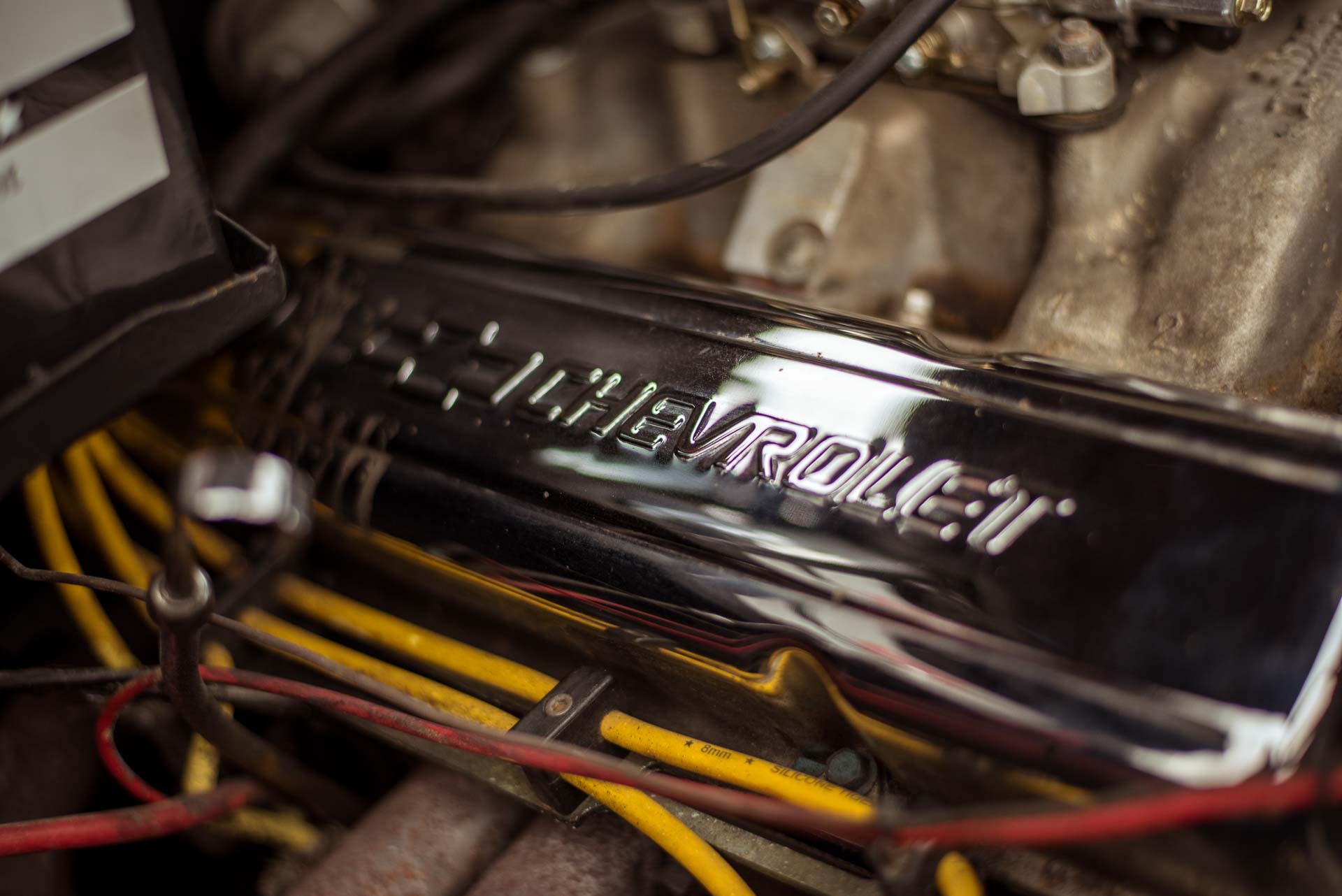
However, this engine was backed by the equally legendary Powerglide two-speed automatic. It wasn’t the only option for 1955, though, as the base One-Fifty model cars were available with the 235-cubic-inch I6.
…Harley Earl, said the Corvette-based Nomad was one of his dream cars…
’55 was also the introduction of the Nomad. It was introduced in its mid-year run with the Bel Air trim and V8 standard as a two-door station wagon. It was also the higher-end option as it came with upscale carpeting, two-tone paint, headliner trim, and other features to separate it from the One-Fifty Series. What helped set its distinction, though, was its roots from the General Motors Motorama show car with the same name.
The Motorama shows were where the public could see prototype vehicles of the time like the Corvette, Pontiac Bonneville Special, and the Oldsmobile F-88. Head Stylist at GM, Harley Earl, said the Corvette-based Nomad was one of his dream cars and followed the introduction of the 1950 Ford Country Squire, also a two-door station wagon.
1956
These are considered “carryover” models, with a few changes made. The one everyone paid attention to, however, was the bump in power and include an oil filter in the 265.

Aftermarket and tinkers, hot rodders, had already started making huge power gains in the 265 and Chevrolet was right there with them. The standard 265 went from just 162-horsepower to 225 while the Super Power Pack version upped that to 240-horsepower with that Rochester four-barrel carburetor.
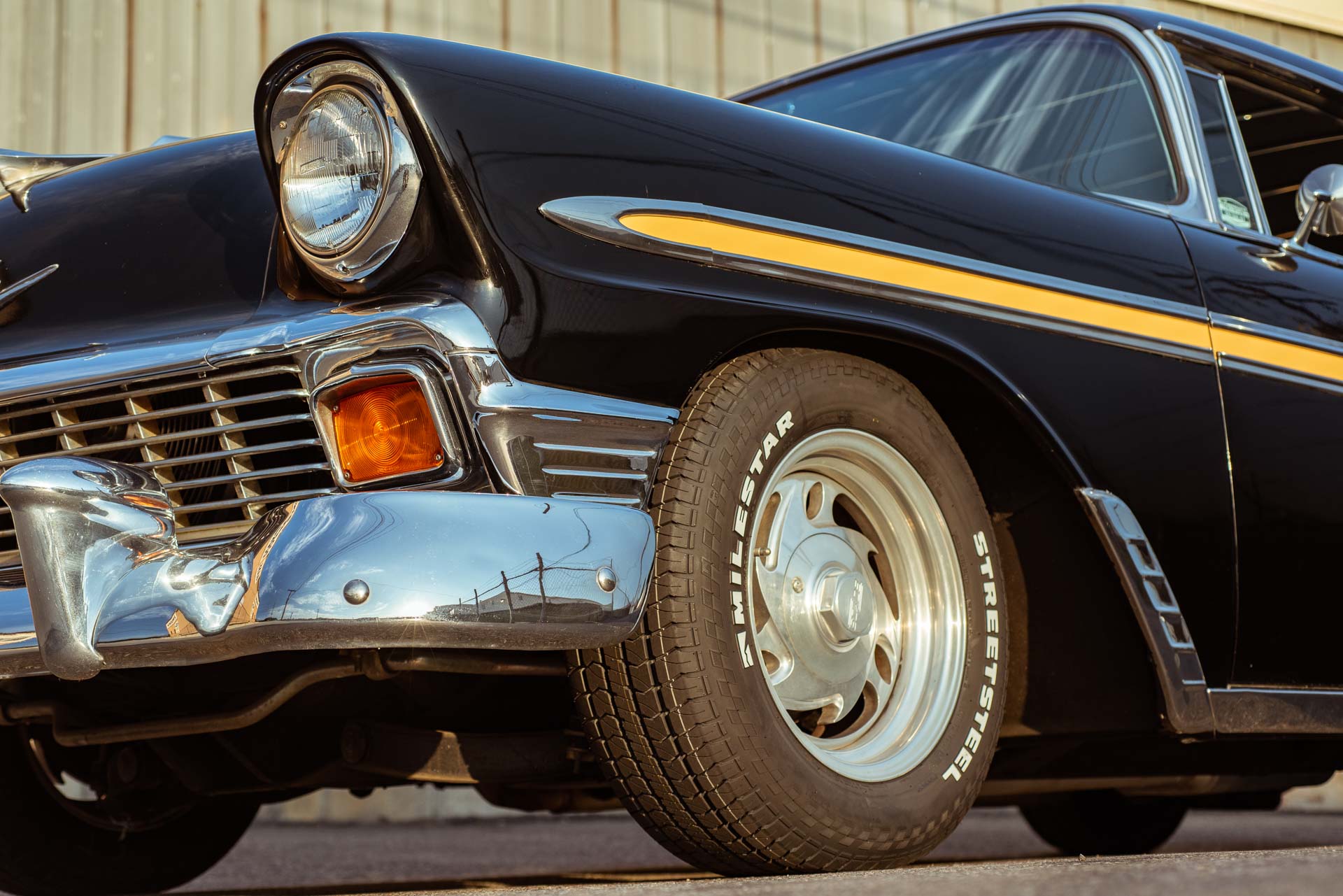
The Bel Air model, though, received some interesting changes to its grille. It went from its “Ferrari-inspired” front end to a full-width grille, which more people liked. The tail lights became incorporated into their housings and were single piece save for the left-hand side. That used a Cadillac-inspired feature of housing the gas filler behind it.
Oh, and only 7.4-percent of Bel Air owners ordered seat belts.
The Bel Air also got a new model known as the Sport Sedan and was a pillarless four-door hardtop. There was even the option for a rain-sensing automatic top that was seen on the 1951 LeSabre concept car but was never believed to have ever been installed. Oh, and only 7.4-percent of Bel Air owners ordered seat belts.
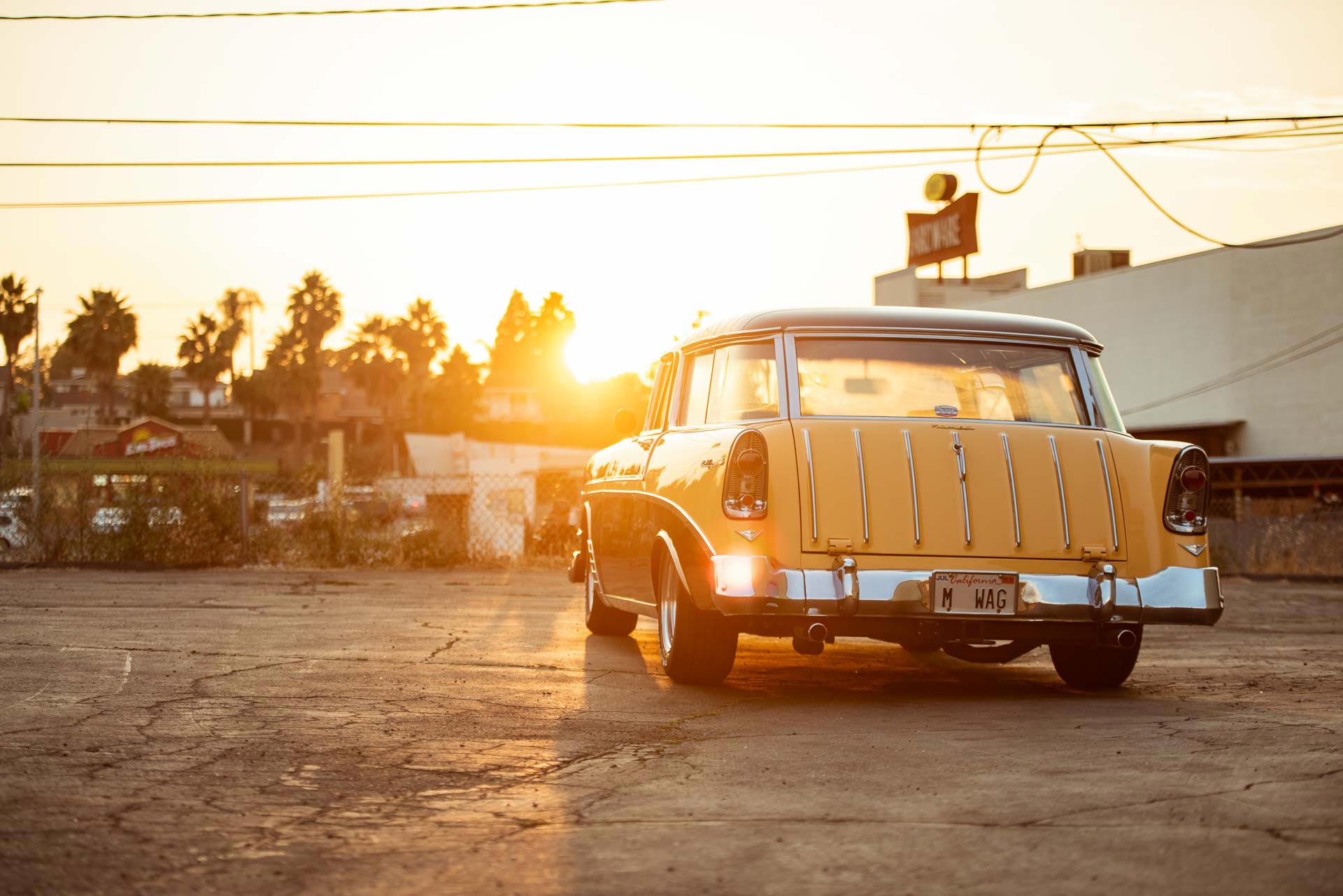
1957 and the Turboglide
1957 would be the last year for the Tri-Five. All cars now got those large tailfins that made them spectacular and the “twin rocket” hoods. Cars would get a tricolor paint with even more chrome outside and in.
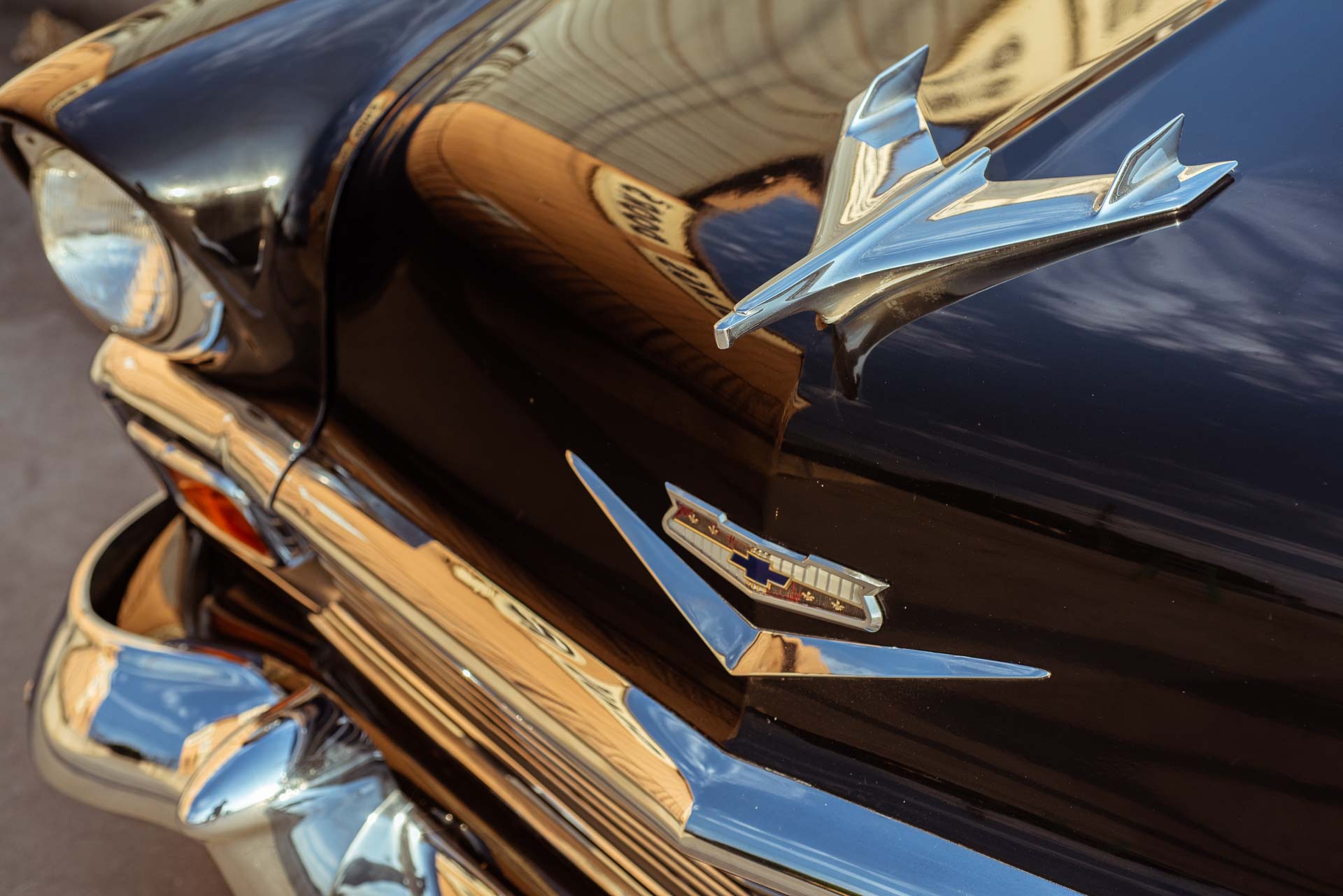
The horsepower wars were heating up between the Big Three and Chevrolet gave owners a choice of seven different V8s. These ranged from the original 265 to the then new 283-cubic-inch SBC—some of those even coming with early Rochester Ramjet mechanical fuel injection and produced 283-horsepower.
This was also the introduction to the Turboglide automatic transmission. Instead of being a two-speed transmission, the Turboglide was a form of continuously variable gear-ratio transmissions. The way it works is like how a sequential-dual-clutch box works. Sort of.
Usually, an automatic has a torque converter with three elements inside it: the impeller, the turbine, and the stator. The impeller pumps fluid through the turbine with the stator directing oil so it hits the back of the impeller blades. This action also gives the torque converter that multiplication ability.

How A Turboglide Works
The Turboglide is different and, if you think a regular automatic is witchcraft, you’re not ready for this. The Turboglide has three individual drive turbines with each connected to a different ratio inside of the gearbox. Transmission fluid goes from the impeller pump to the first turbine blade, striking it and engaging the “first gear” ratio.
That first turbine then acts as a stator and causes the fluid to strike the blades of the second turbine and “second gear” ratio. Finally, the second turbine acts as the final stator and the fluid strikes the blades of the third turbine and it goes into “direct drive” ratio.
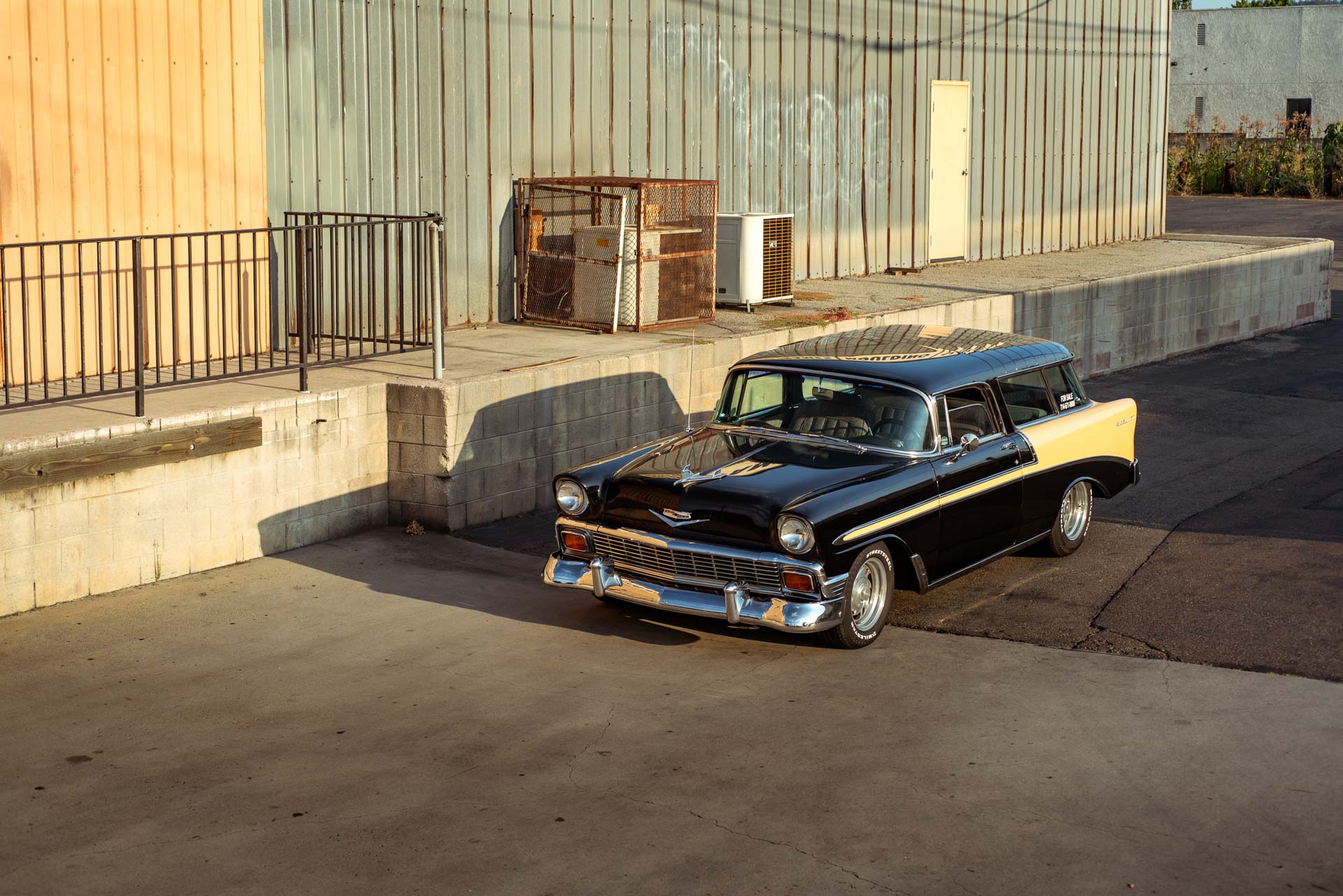
This is directly connected to the output shaft of the transmission. Once the low turbine matches the pump speed, it freewheels on a one-way sprag clutch while the second turbine begins to match the speed of the impeller pump. Eventually, it does and that’s how fluid will pass through it and fully drive the direct drive.
…if you think a regular automatic is witchcraft, you’re not ready for this.
It also still has a stator which can switch between two positions and that’s controlled by the driver through the accelerator pedal. It works like a transmission kick-down in a conventional transmission to engage a “passing gear” or drop down to the next lowest gear to increase power going to the rear wheels.
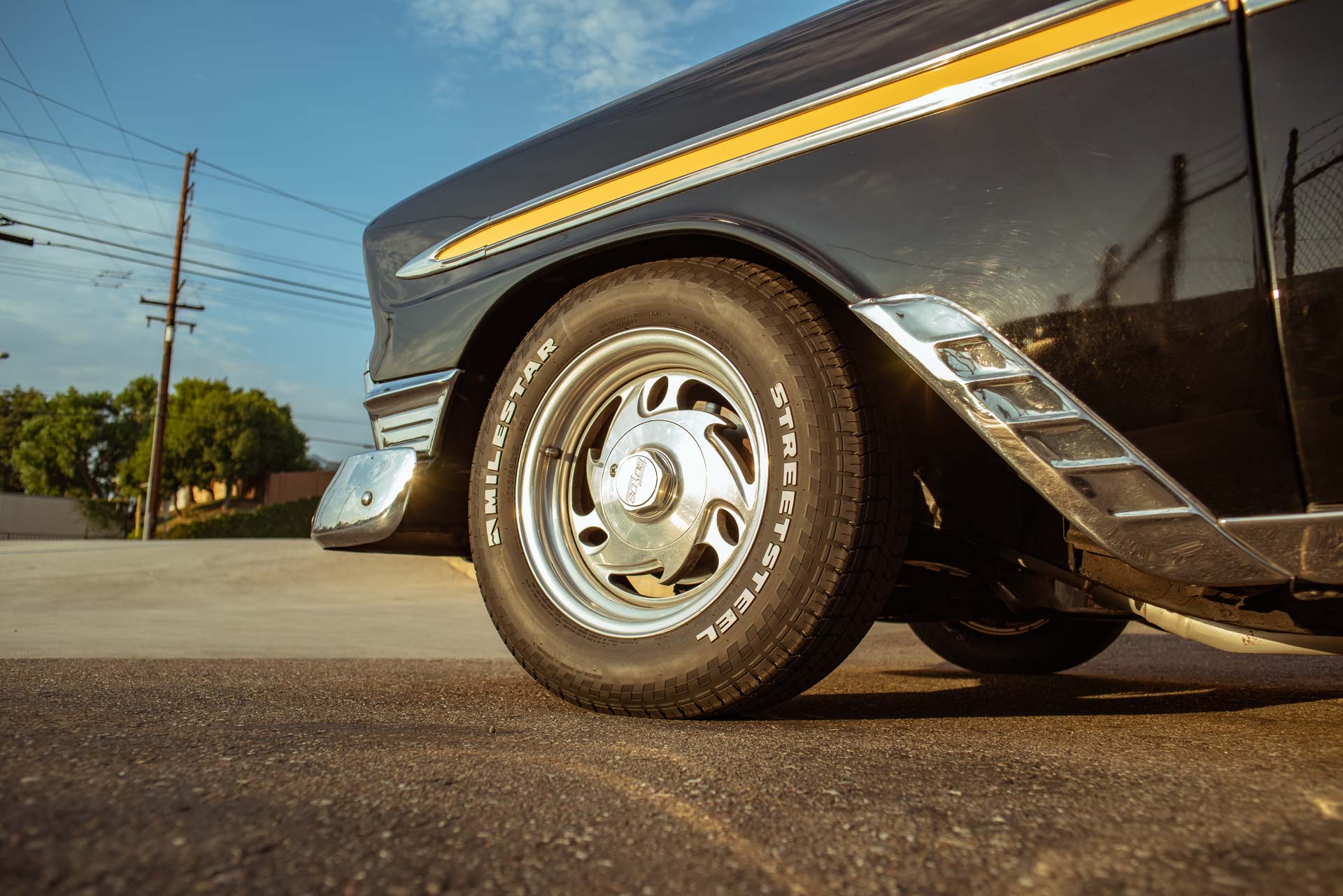
The most interesting part about this, the engine stayed nearly at the same RPM through operation, changing only to accelerate. At normal operation, the Turboglide operated the engine between 3500 and 4000-RPM in roughly a 400-RPM window.
If you’re thinking this sounds like the operation of the modern Continuously Variable Transmission (CVT), you’re not far off but the Turboglide was fully hydraulic and could be geared to multiply engine torque at any speed whereas CVTs are nearly all mechanical.
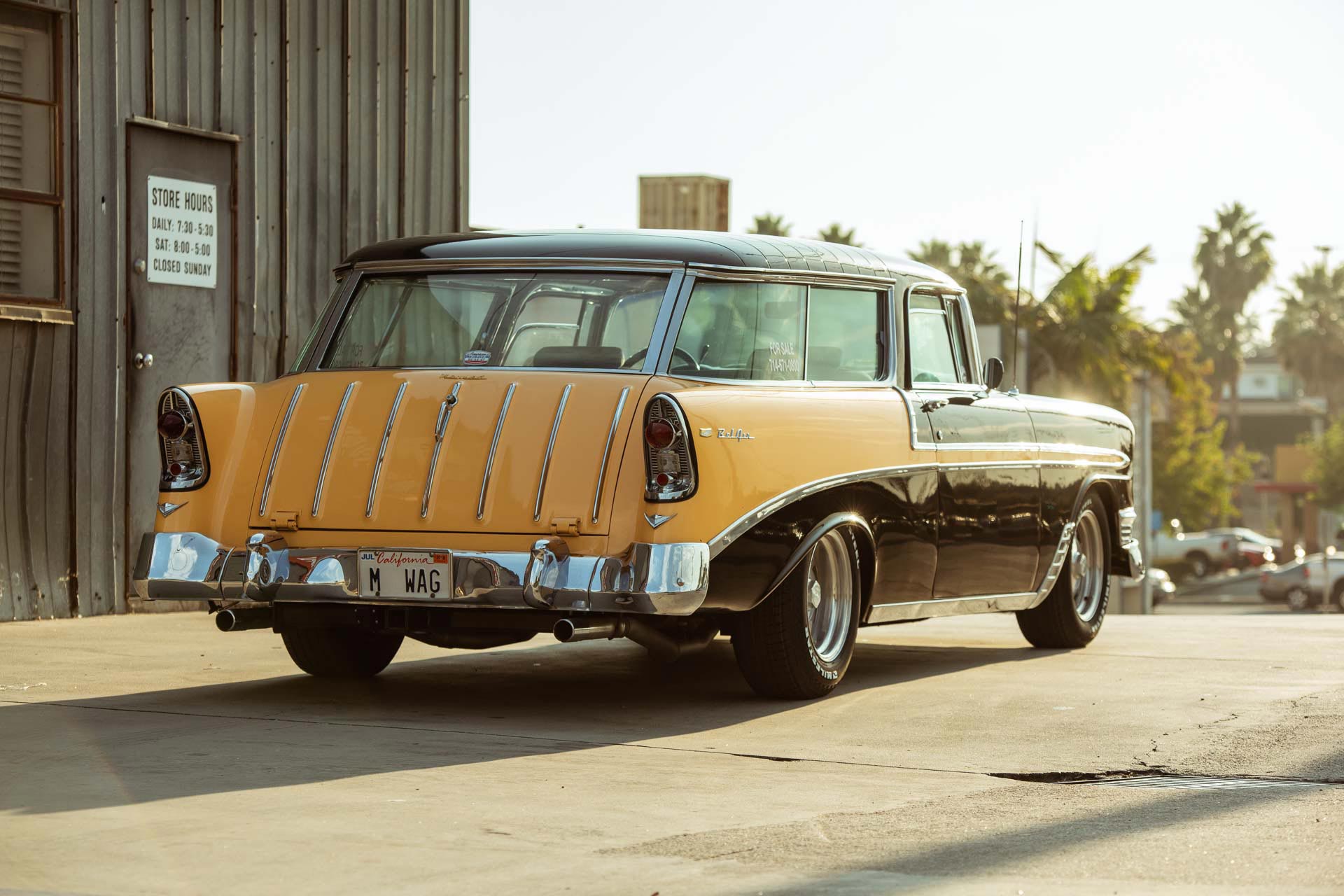
The other advantage was the use of the Grade Retarder range, which allowed the engine to “engine brake.” You could use the engine to slow you down just like you would in a manual. That’s why a Turboglide selector goes P-R-N-D-Gr.
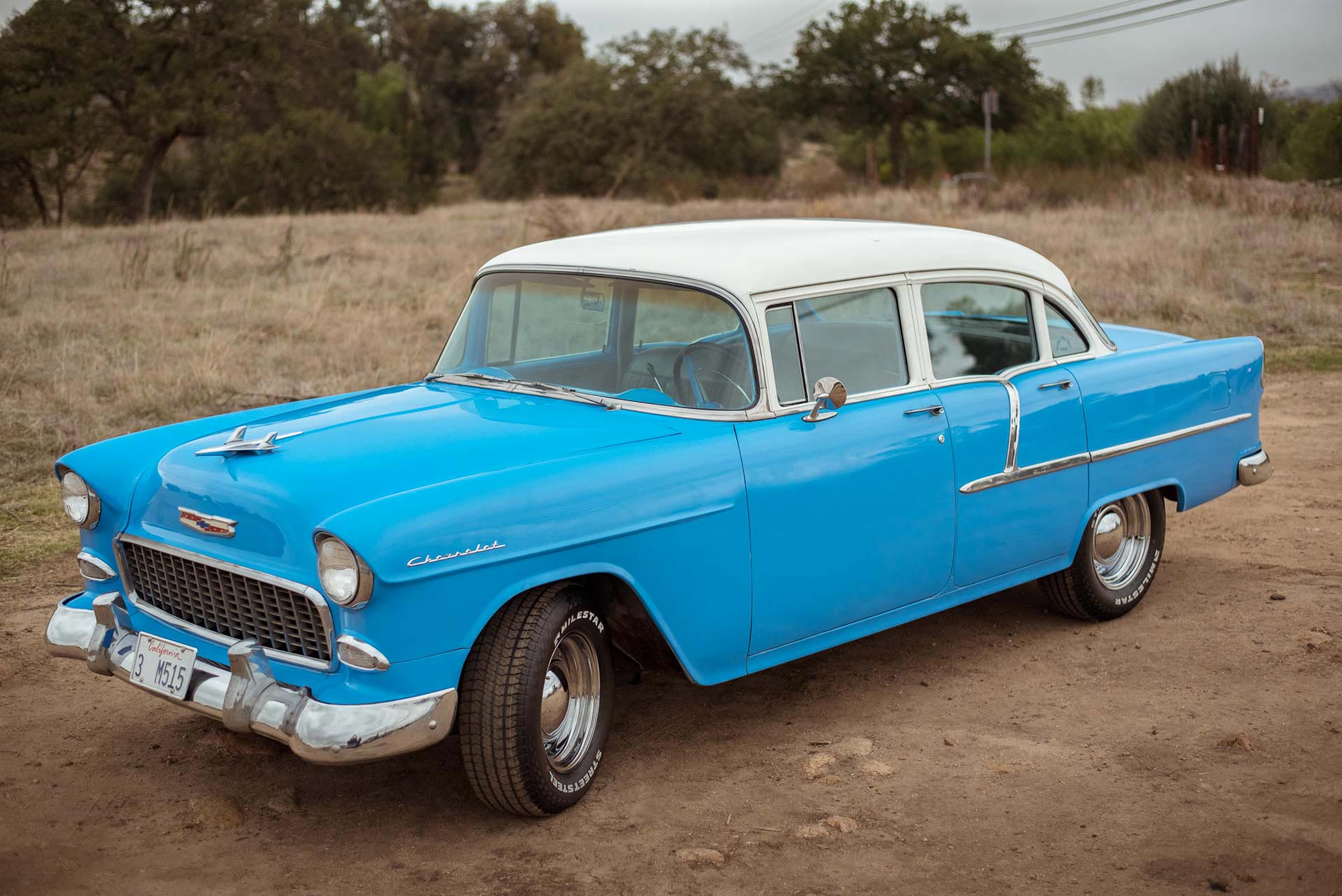
The End of the Tri-Five Era, but Not the Bel Air
After 1957, Chevrolet did away with the One-Fifty and Two-Ten models and began the longer, lower, and the heavier era of car design. These cars were replaced by the Delray (One-Fifty) and Biscayne (Two-Ten). 1958 not only marked the beginning of the Chevrolet Big Block engine with the 348-cubic-inch V8 but also making the Bel Air into the “halo car” for Chevrolet with the Impala.
This meant that the Impala Bel Air was only available in a hardtop coupe and convertible for its first year. While it had similar design cues from other models, the Impala had a different roofline, a vent above its rear window, unique side trim, and triple tail lights housed in broader alcoves.
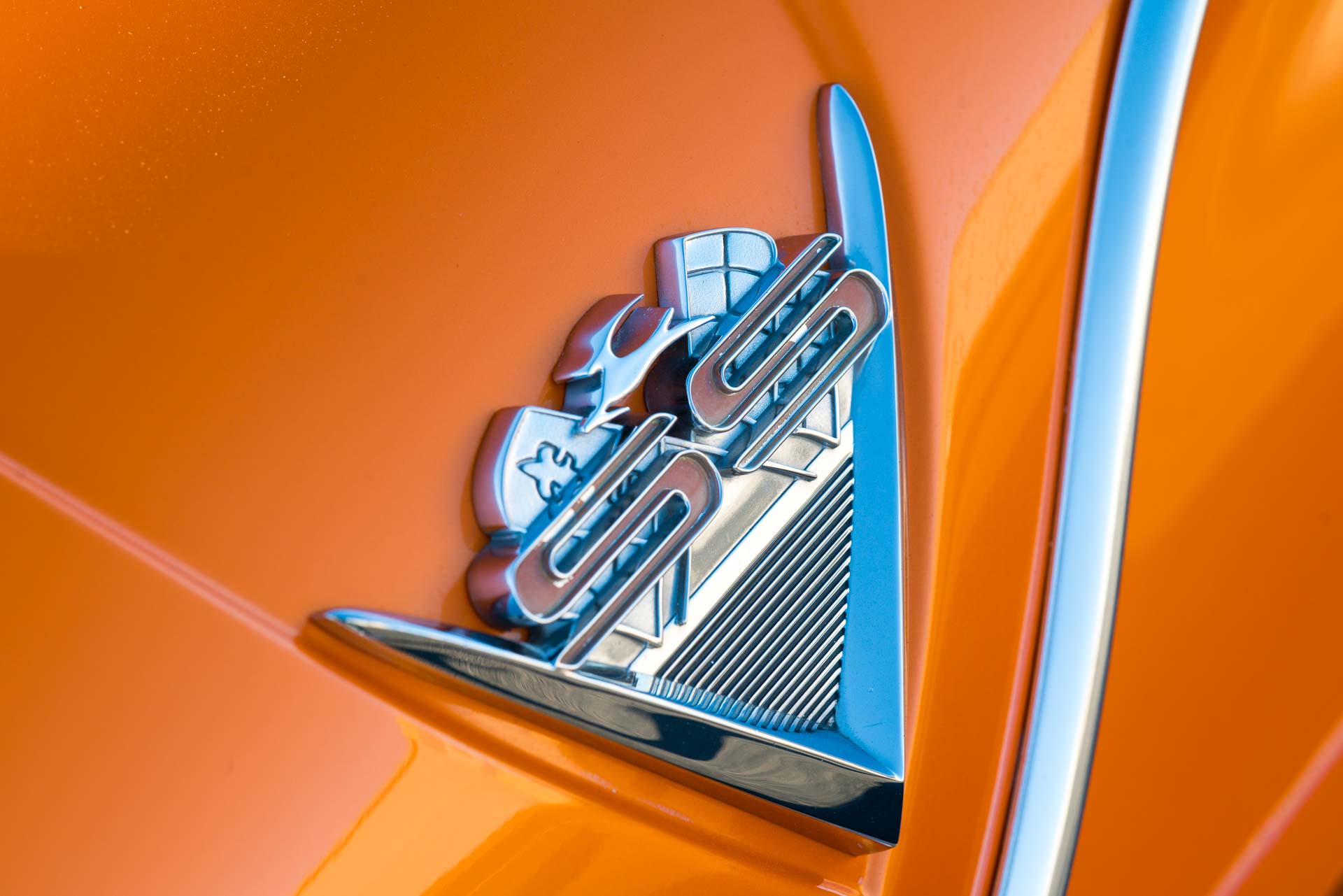
The last of the Bel Airs would be manufactured in 1975 for 1976, but a brand-new trim would be born and create an even more exciting, performance orientated trim line. The 1961 to 1969 Impala Super Sport, the SS.


